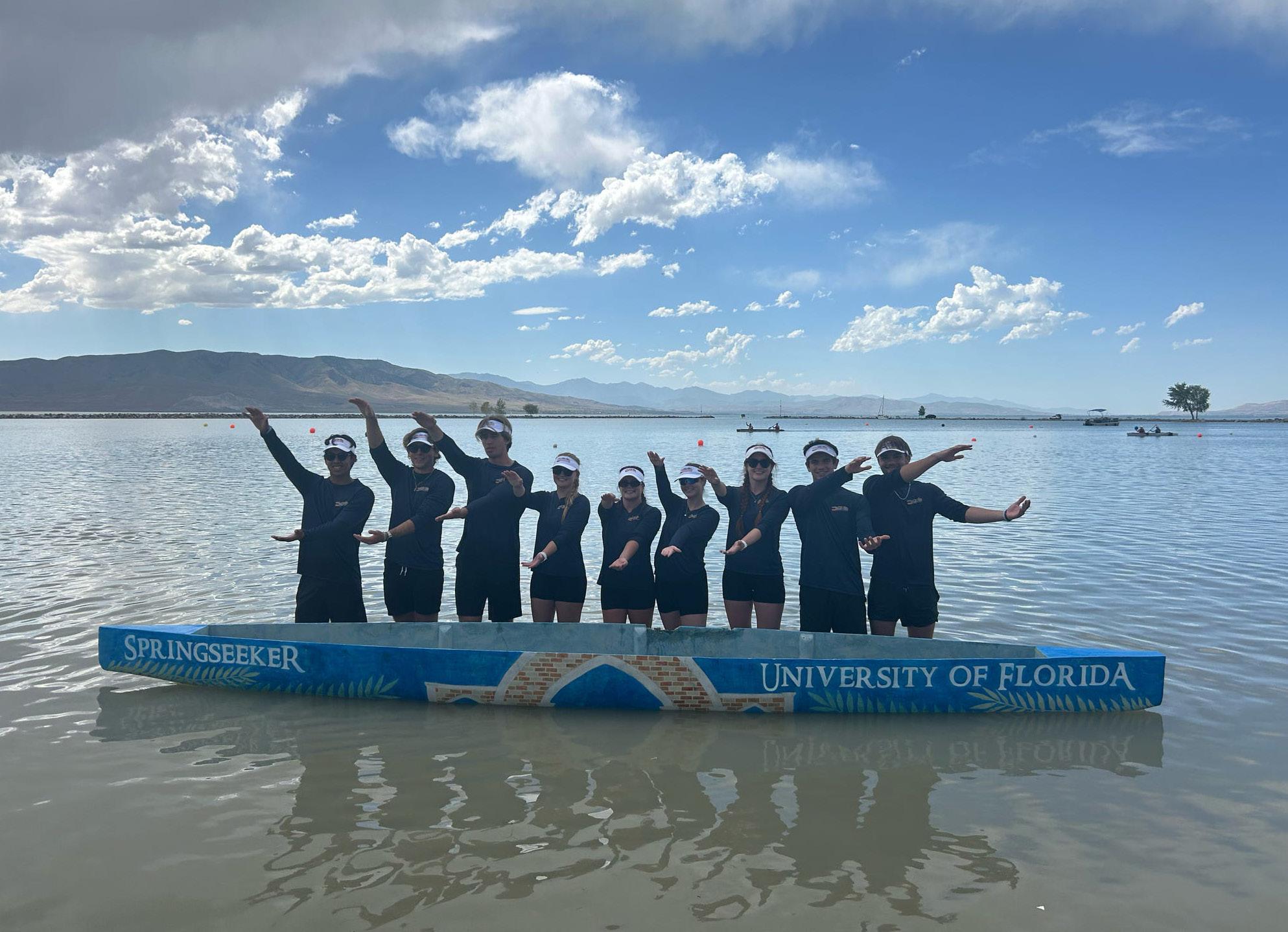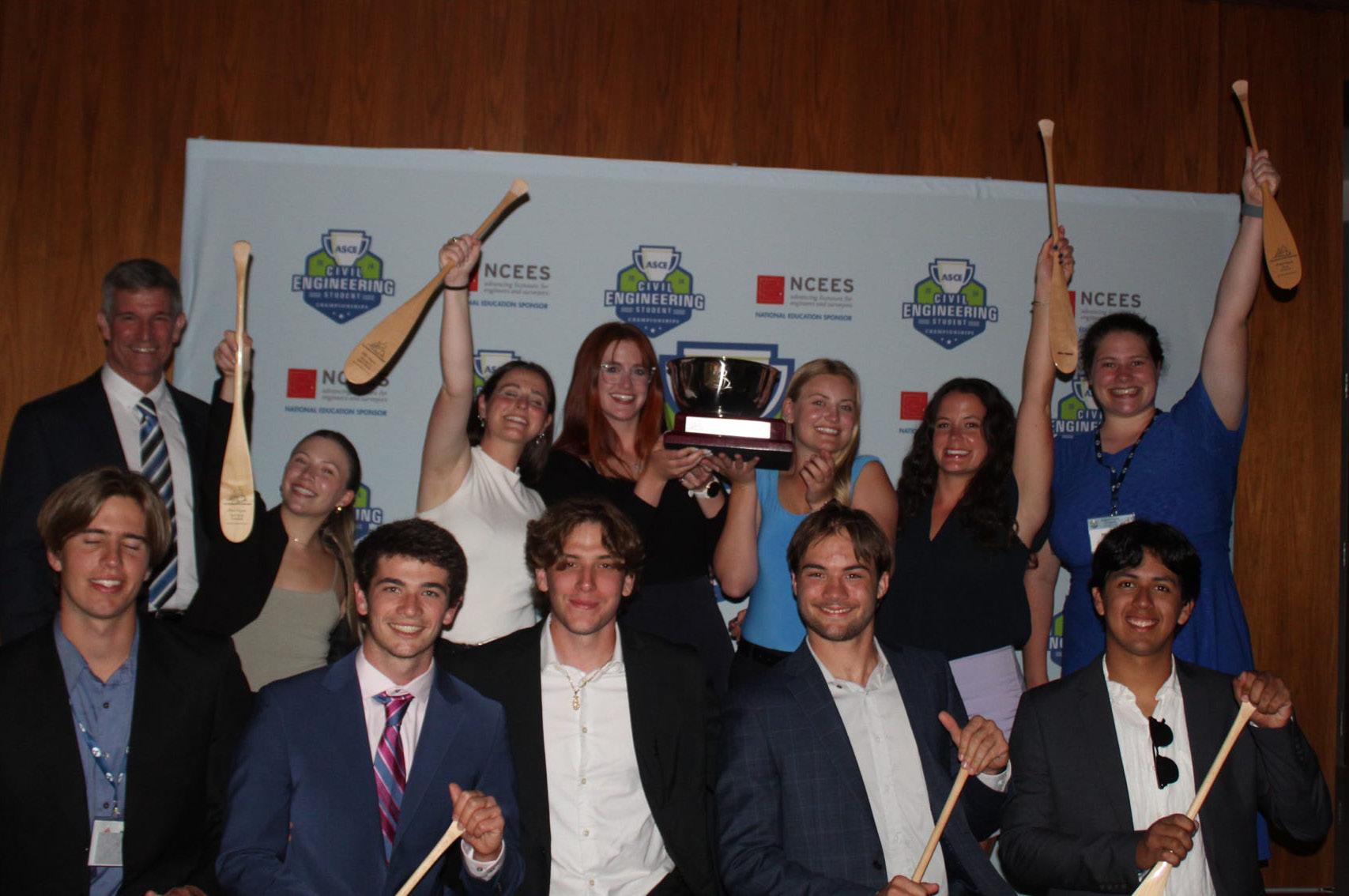
7 minute read
Education Update: Amplifying Accomplishments: Florida’s Brightest Engineering Students Receive Recognition Beyond the Classroom
By Lauren Heighton, Staff Writer
Within the State of Florida, the next generation of engineers is developing. From high school STEM programs to graduate students studying lightning, their innovation is inspiring.
Here are a few students who have been recognized this year for their talents and contributions to engineering in their respective fields of study.
Young Scientist Award37th International Conference on Lightning ProtectionMegan Mark, Florida Tech
Megan Mark, a PhD candidate at Florida Tech, traveled a far way from home for her award. In September, she attended the International Conference on Lightning Protection in Dresden, Germany.
Her presentation, “High-Speed Video Camera and Geostationary Lightning Mapper Measured Signatures of Cloud-to-Ground Strokes with and without Significant Continuing Current,” focused on the specific part of a return stroke within a lightning flash that is especially dangerous. The presentation is a piece of the greater research Mark works on at Florida Tech.
“There's this continuous low-level slowly varying current, around tens to hundreds of amps that lasts for up to half a half second or even longer,” Mark said. “It can be one of the most dangerous parts of lightning. It can cause wildfires. It can cause damage to infrastructure such as power systems and houses and buildings.”

Mark looked at a space-based protection system, called Geostationary Lightning Mapper (GLM), to see if it was effective in tracking the continuing current.
“We were able to do this really in-depth study comparing our direct ground measurements using the current data from the strikes, the high-speed video and electric field data, and comparing it to the satellite,” said Mark.
Mark found that the GLM was not as effective as it was prior to updates the satellite underwent. However, the research is a contribution to the continuing improvement of detecting lightning.

At the conference, Mark received the Young Scientist Award, an honor awarded to only four participants at the conference. The award recognizes recipients under the age of 35 for their presentations at the conference and significant contributions to the field of lightning protection.
During the conference, Mark presented her research and attended workshops on a wide scope of issues related to lightning.
“The sessions I normally go to are mostly lightning detection and lightning physics, whereas this conference was really great because it was not only those things, but it was also the protection part of it,” Mark said. “It was really cool to see how my work can actually affect that kind of thing. Everything that my fellow graduate students and I work on, it's all going towards that, the modeling of lightning and protection from lightning to help keep us safe.”
At Florida Tech, Mark is working to finalize her dissertation, titled “Investigating Global Lightning Observed from Ground and Space, and its Relationship to Solar Activity.”
FIRST OVERALLASCE Concrete Canoe CompetitionUniversity of Florida Concrete Canoe Team
Gainesville native Brennan Kade has been working towards victory since before his acceptance to the University of Florida. A third-year civil engineering student, Kade currently serves as a project manager for the UF Concrete Canoe Team.
“Our high school would take tours of UF all the time, and we would get exposed to all the engineering teams and engineering opportunities there,” Kade said. “We had a tour one day that took us to Weil Hall, the civil engineering building, and the team was actually working on the canoe for that year.”
It was love at first sight, and Kade knew he wanted to be a part of the Concrete Canoe Team when he got to college. Now, he’s held three positions on the team and has grown into a knowledgeable asset.
Kade was a competing member at the 2024 ASCE Civil Engineering Student Championships in Provo, Utah, where the team took first place with their canoe, “The Springseeker.” This win sealed their fourth national title at the competition, a testament to the thriving program they’ve built.
The process of building The Springseeker began in Fall 2023, with hundreds of hours put in by team members on the final product. These design aspects make up part of the competition’s scoring, as does performance on race day.
“It's a lot of labor, it's a lot of standing, it's a lot of sometimes arduous things, and to see the payoff of that versus other schools is very impressive, and it makes you kind of fall in love with the process that we have,” said Kade.
Kade acknowledges how much value is placed in the transfer of knowledge as students grow into their roles. He spent his first year as a technician and then moved up as a hull design captain the next year.
“As a hull design captain, one area that we explored was we wrote a whole new bunch of Python code to help with our process, and the team this year has actually expanded upon that and changed a lot of it, and they just picked up right where we left off because we had begun training them to,” Kade said. “It's supposed to be a seamless transition.”
This year, he shares the responsibility of managing the entire Concrete Canoe process with his co-project manager, Alicia Demicco. They’ve got their eye on the prize for next summer’s competition already.
“One of the big calling cards of this team is how we reinforce all the practices that made us national champions last year,” Kade said. “How do we improve all the little inefficiencies in our process and buff out the kinks in how we make our product?”
Lockheed Martin Award31st Annual Solar Car ChallengeFlorida Atlantic Solar Owls
In July, Fort Worth, Texas hosted 32 teams of high schoolers for the 31st annual Solar Car Challenge. Teams from across the country competed over several days to showcase their hard work utilizing alternative energy to power roadworthy cars.
The Solar Owls, a team of Florida Atlantic University High School students, were among the teams who competed. In addition to the Lockheed Martin Award for overall engineering excellence, the Solar Owls were awarded the Renda Carter Award for their outstanding video and scrapbook.
“The kids had a blast,” said Allan Phipps, director of the CANE Institute for Advanced Technologies. “They learned a lot about themselves, about teamwork, about time management and sportsmanship.”
Phipps has overseen the process of creating the car since the beginning, over five years ago. The completion of the car made it the first four-seater cruiser division car in the state of Florida.
“Some of our students got involved in our solar car as middle schoolers, as seventh and eighth graders, kind of as the wrench turners, if you will,” Phipps said. “Some of those students actually stepped up and became our Lead CAD, lead mechanical and lead electrical, and they are now seniors about to graduate.”

To construct the car, students collaborated to make a mold design. Though their first attempt wasn’t successful, they pivoted and found a new way to construct it out of flat stock.
“The students learned a lot of life skills as far as going out and learning how to ask the questions and ask for money,” said Phipps. “They wrote several grants and won some small grants, but really it was corporate sponsors that really helped make the project happen.”
With donations of carbon fiber, glue, suspension materials and more, the Solar Owls logged over 15,000 hours in assembling the car. In all, 26 students traveled to the Texas competition.

While the Solar Owls were limited in how many students they could bring to Fort Worth, other competing schools were in need of help in order to participate. Four passengers are required at all times for the cruiser division of the competition, and they must rotate as the car can reach high temperatures while racing.
“One team only could afford to send six members, so eight of our team members got certified to ride in their car, ” Phipps said. “If the heat index goes over 95 when a student is in the car, they're limited to two hours in the car and then they have to go immediately into the air conditioning for an hour.”









